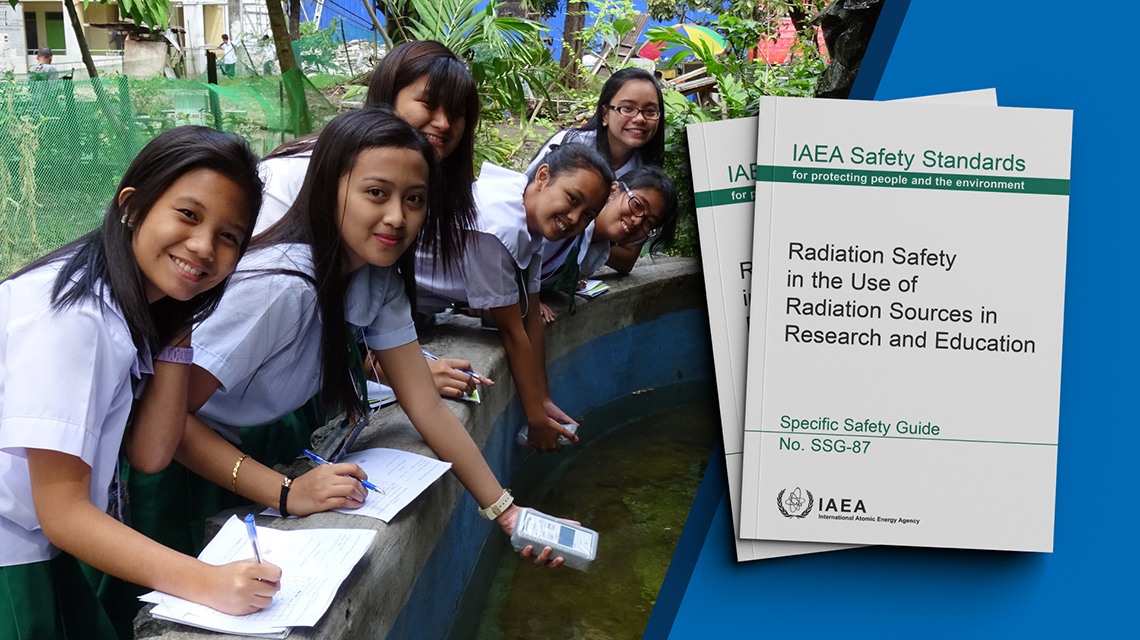Source: International Atomic Energy Agency – IAEA
Experts of the International Atomic Energy Agency (IAEA) have continued to hear military activity in the region where Ukraine’s Zaporizhzhya Nuclear Power Plant (ZNPP) is located, but there have been no reports of new drone attacks on the site over the past week, Director General Rafael Mariano Grossi said today.
Earlier this month, a series of drone strikes targeting the ZNPP sharply heightened concerns about the already precarious nuclear safety and security situation at the plant, prompting Director General Grossi to call for an immediate end to these “reckless attacks” and maximum military restraint in an address to the United Nations Security Council on 15 April.
Three days later, on 18 April, the ZNPP told the IAEA team of experts stationed at the site that there had been another attempted drone attack on the plant’s training centre.
“We are not aware of any drone attacks since this reported incident one week ago, which is encouraging. However, we know from experience that the situation can take a sudden turn for the worse from one minute to the next. The situation remains highly unpredictable,” Director General Grossi said.
On Monday, the IAEA experts visited the training centre just outside the ZNPP site perimeter for the first time since the reported drone attacks on the building on 7, 9 and 18 April. They were not able to see its roof but were told by a representative of the training centre that it had not been damaged on this occasion. However, it had been a stressful and frightening experience for staff, the representative added.
The IAEA team did note that the training centre building was being repaired following damage it sustained in 2022, when the plant was hit several times.
The team has continued to hear outgoing artillery fire daily from locations at various distances from the ZNPP site. Last Friday, an air raid alarm was announced on the on-site speaker system instructing personnel to stay indoors, lasting for 90 minutes.
The IAEA experts have continued to conduct walkdowns across the site, where all units remain in cold shutdown. These included a visit to the reactor building and safety systems rooms of unit 3, where they observed the status of the main coolant pumps, steam generators as well as the operation of one low-pressure core cooling pump and one spent fuel pool cooling pump. They also went to the same unit’s pumping station, noting that the equipment appeared to be well-maintained.
Last Friday, they went to the turbine building of reactor unit 5 where they were able to visit areas on three levels of the building but were not allowed access to the western parts of the building.
The ZNPP separately informed the IAEA team that it is preparing to upgrade the fire protection system at the plant.
In addition, the IAEA experts this week also checked the status of the spent fuel casks in the site’s dry spent fuel storage and did not observe anything unusual, including with regards to the integrity of the seals on the casks. The experts were informed that the ZNPP conducts monthly visual inspections on the external integrity of the casks, annual integrity assessments with instrumentation to check for cracks and erosion and internal integrity checks every four years using cameras and other instrumentation.
During recent discussions with the ZNPP regarding emergency preparedness and response, the IAEA experts were informed that an emergency drill is being prepared in the near future based on a scenario related to the cooling systems at the site, which are important for nuclear safety. The IAEA experts have informed the ZNPP about the team’s interest to observe this drill, and are awaiting notification from the plant on the date.
Elsewhere in Ukraine, the IAEA teams present at the Khelmnytskyy, Rivne and South Ukraine NPPs and the Chornobyl site reported that nuclear safety and security is being maintained despite the effects of the ongoing conflict, including air raid alarms on several days over the past week.
Scheduled maintenance and refuelling activities are progressing at two of the four reactor units at the Rivne NPP and one unit of the South Ukraine NPP. The IAEA experts at these two sites also rotated this week.
The Agency has continued to deliver equipment for maintaining nuclear safety and security in Ukraine. Last week, Ukraine’s VostokGOK facility received equipment aimed at enhancing its physical protection and yesterday, the South Ukraine NPP received a beta spectrometer, bringing the total number of deliveries to Ukraine to 44. The equipment was procured with funding from Japan and the United Kingdom.



